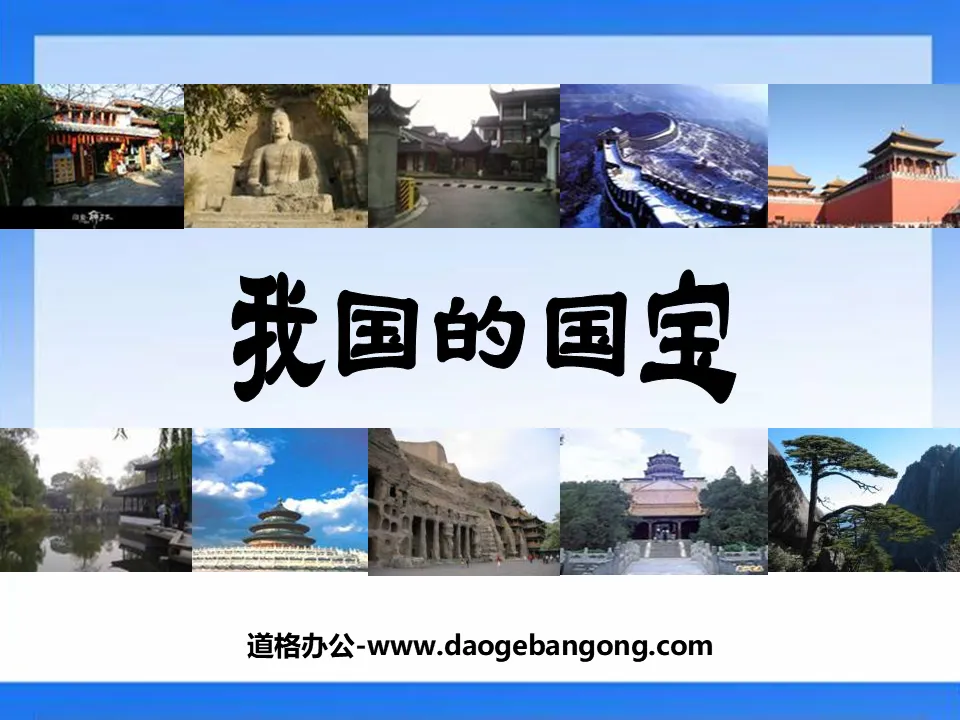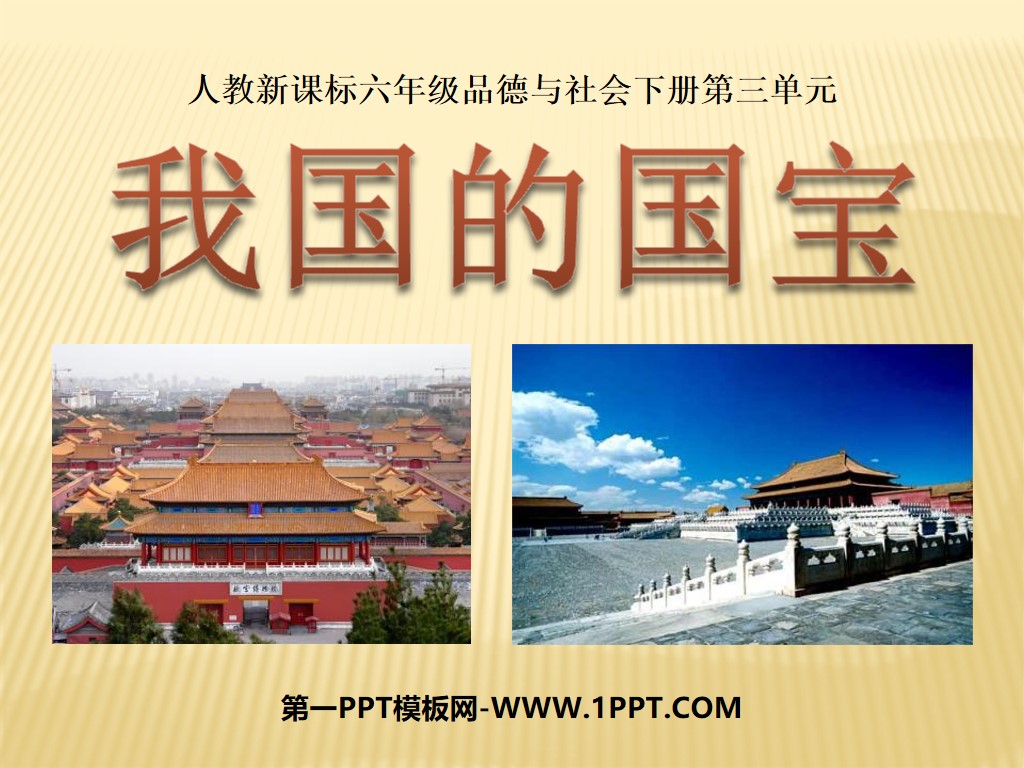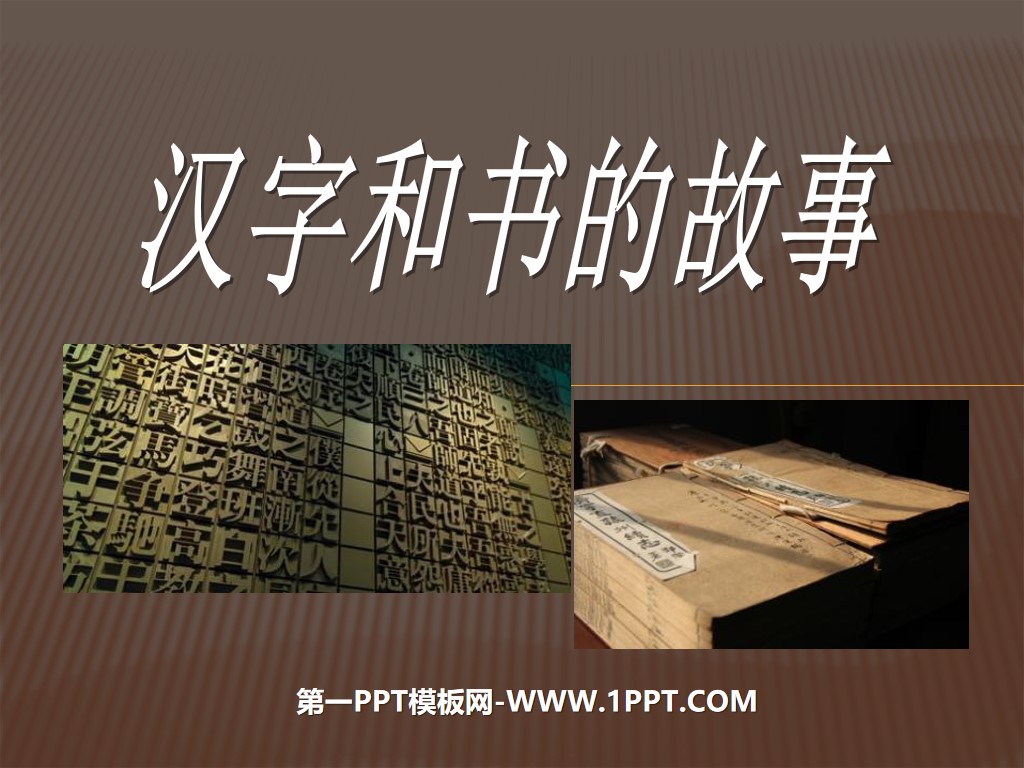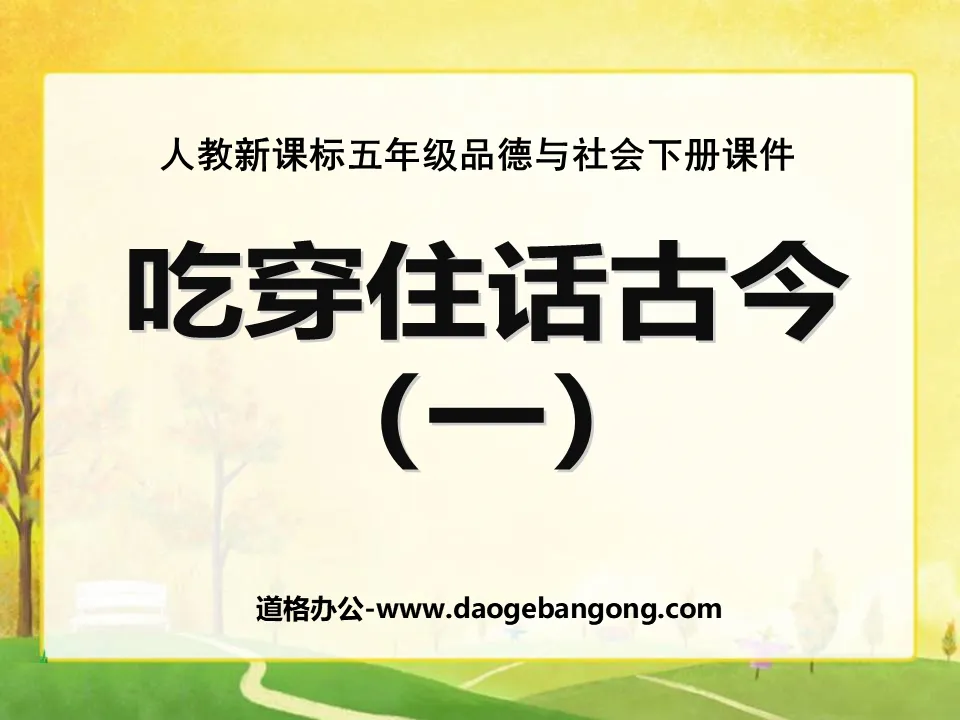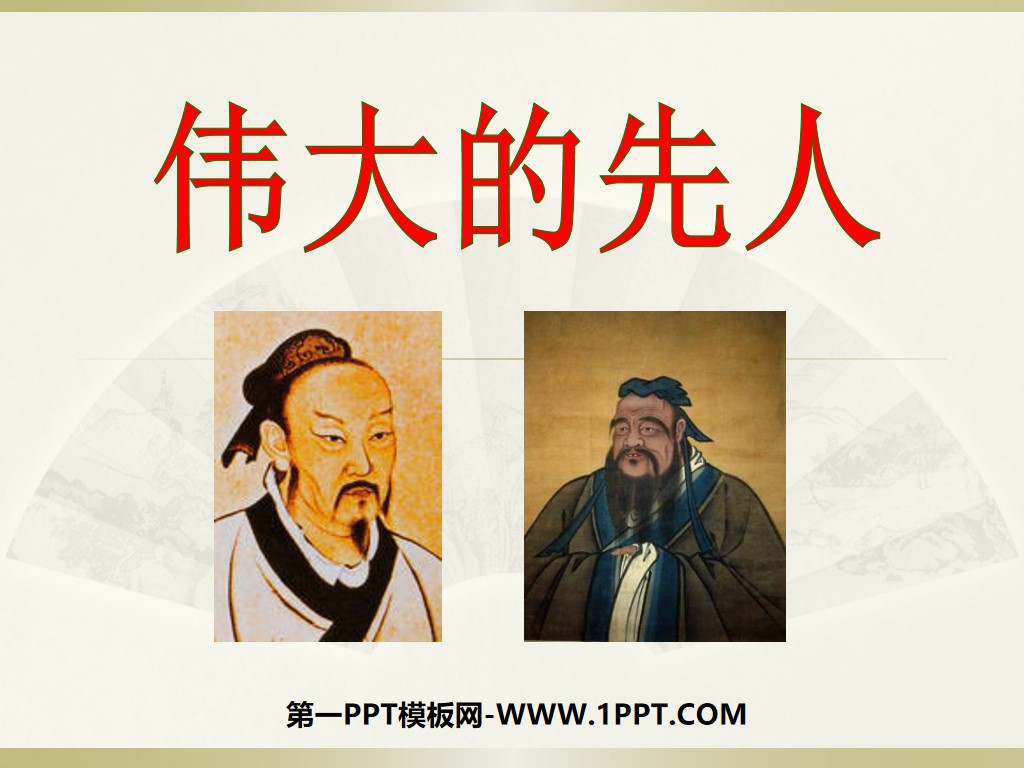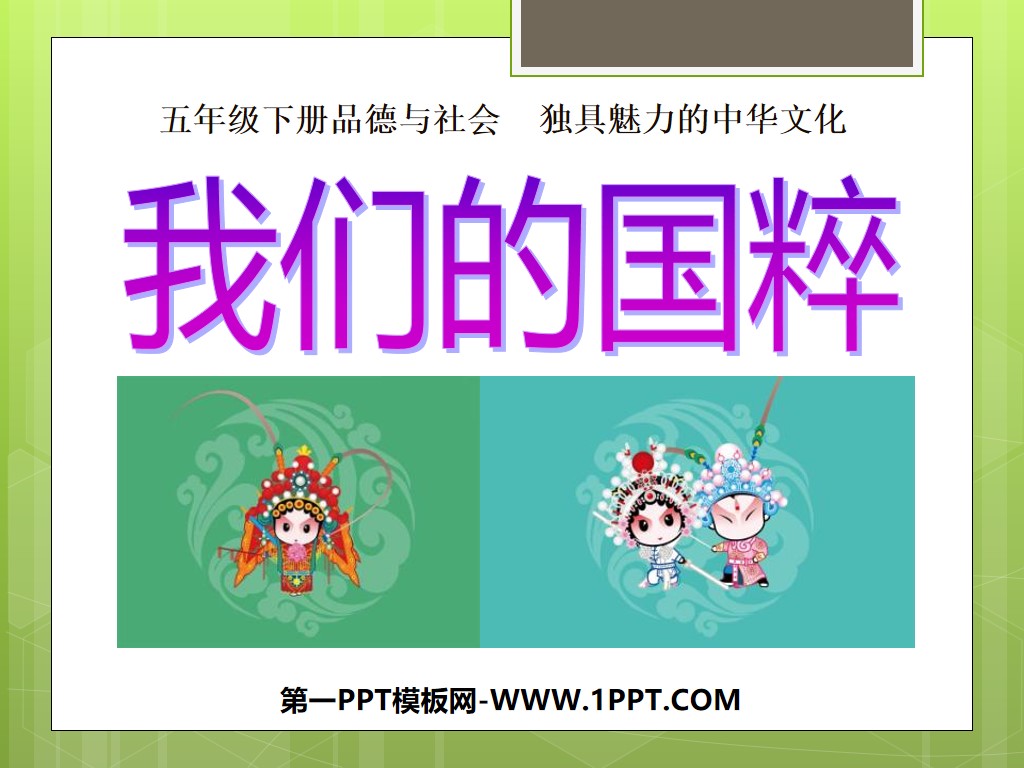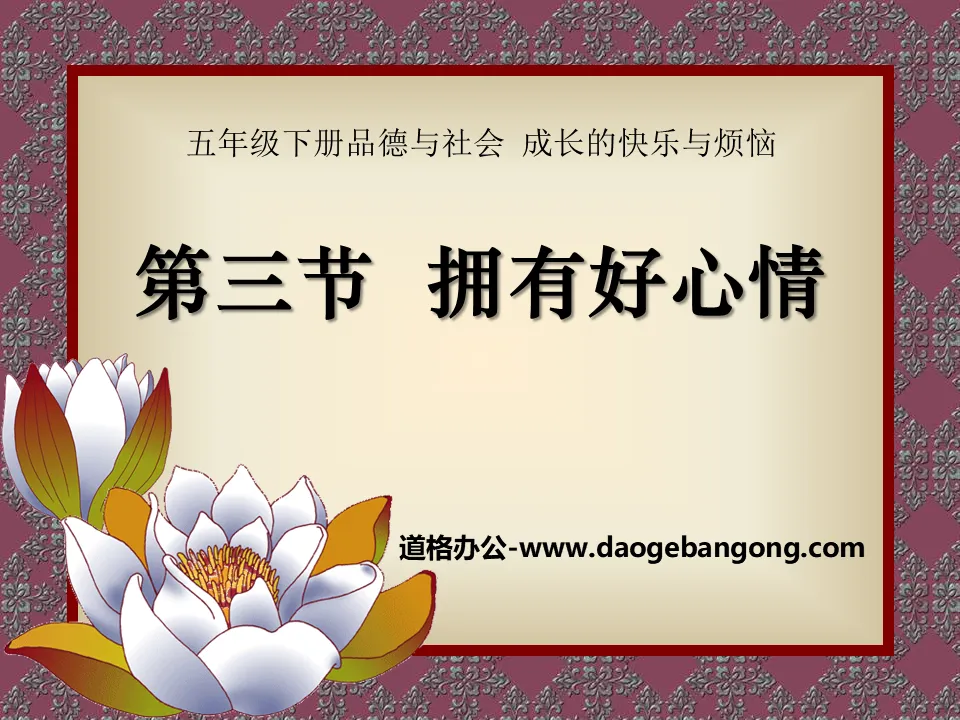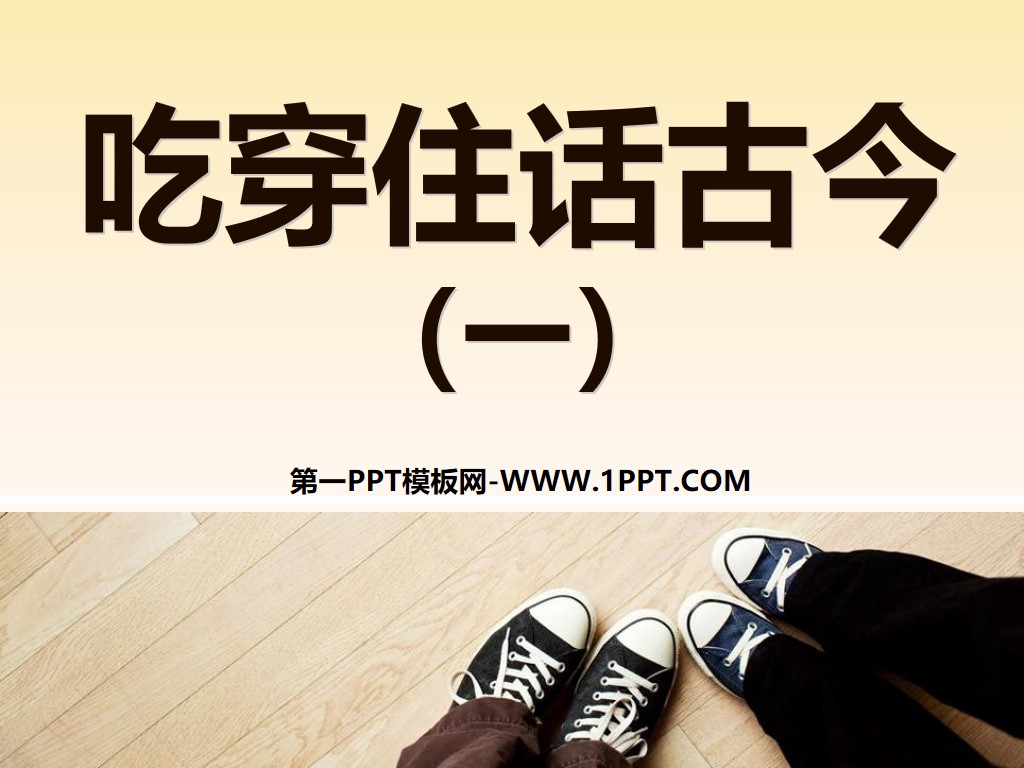
| Category | Format | Size |
|---|---|---|
| People's Education Edition Fifth Grade Society Volume 2 | pptx | 6 MB |
Description
"Talk About Ancient and Modern Food, Clothing, Housing (1)" Tracing the Roots PPT Courseware 3
ancient ape
Australopithecus relied on collective strength, relying on hands, and using natural stones and branches to defend against enemies and find food.
Peking Man
Pekingese were the first ancient humans to use fire and hunt large animals. People in Beijing have a shorter life span. According to statistics, 68.2% die before the age of 14, and less than 4.5% die before the age of 50.
Farming and livestock
About 10,000 years ago, farming and animal husbandry began to occur in the ancient world. Several farming centers with their own characteristics have appeared in the world.
The history of Chinese food development
1. The Suiren family: drilled wood to make fire, cooked food from then on, and entered the age of stone cooking. Main cooking methods:
① Cannon, that is, burning the fruit pulp through fire;
②Pot: Wrap in mud and bake;
③Use a stone mortar to hold water and food, and use red-hot stones to scald the food;
④ Roasting: Heat the stone flakes, then put the plant seeds on top and fry.
2. Shennong: "Plowing makes pottery". He was the founder of Chinese agriculture. He tasted white grass, created ancient medicine, invented grass, and taught people how to farm. Pottery enabled people to own cooking utensils and containers for the first time, making it possible to make fermented foods such as wine and vinegar. The tripod is one of the earliest cooking utensils.
3. Huangdi: The dietary situation of the Chinese nation has improved again. The emperor built the stove and was the god of the stove at first. He concentrated the firepower to save fuel and cooked the food quickly. It was widely used in the Qin and Han Dynasties. At that time, it was a cauldron, and the tall stove gradually disappeared from the stage of history." Steamed rice is used for drinking, and cooked rice is used for porridge." For the first time, food was differentiated based on cooking methods. The steamer was invented and was called a steamer. The steamed salt industry was invented by Susha, a minister of the Yellow Emperor. From then on, he not only knew how to cook but also knew how to mix it, which was beneficial to people's health.
4. Zhou and Qin Dynasties: It was the forming period of Chinese food culture, with grains and vegetables as the staple food. During the Spring and Autumn Period and the Warring States Period, self-produced grains and vegetables were basically available.
5. Han Dynasty: The rich period of Chinese food culture is attributed to the exchange of food culture between China and the West (Western Regions) in the Han Dynasty, which introduced pomegranates, sesame seeds, grapes, walnuts (i.e. walnuts), watermelons, melons, cucumbers, spinach, carrots, fennel, celery, lettuce, Green onions, garlic, and some cooking methods were also introduced, such as fried pancakes, Hu pancakes, sesame pancakes, also called Luradi. Liu An, King of Huainan, invented tofu, which digested the nutrients of beans. It was high quality and low price, and could be used to make many kinds of dishes. Vegetable oil was also invented in the Eastern Han Dynasty.
Characteristics of Chinese food culture
Jing: never tire of fine food, never tire of fine food
Beauty: If you are not good at discerning taste, your cooking skills will not be good.
Love: Drink virtuously, eat harmoniously, and all nations enjoy togetherness
Rituals: At the beginning of rituals, food and drink begin
About the food culture of ethnic minorities
1. Tibetans:
There are not many Tibetan food dishes, regardless of cuisine or style, but the dishes in different places have different styles. A careful study of Tibetan cuisine can be roughly divided into four major flavors: Qiang cuisine represented by Ali and Nagqu; Uyghur cuisine represented by Lhasa, Shigatse, and Shannan, also called Lhasa cuisine; and Linzhi, Medog, and Zimu cuisine. There are more than 200 kinds of royal dishes represented by Rong cuisine; there are more than 200 kinds of palace dishes represented by the dishes of the royal family, nobles and officials in the past.
2. Mongolian:
Beef, mutton, and dairy products are their mainstream foods, and they are also particularly fond of and indispensable foods. "Yang Wu Cha" (translated name from Mongolian "whole sheep mat") hand-braised meat, fried rice, milk tea, cheese, sheep blood sausage, "Guledai", etc. are all flavor foods. When guests come from other places, they will definitely use all their skills and hospitality to make you have a feast and enjoy your stay.
"Yang Wu Cha" is a special dish for Mongolian guests to entertain guests, and it is of the highest standard in pastoral areas. After the imam completes the slaughtering ceremony, the host and hostess show off their skills to break down the whole sheep. Watching the Mongolians use their knives accurately and dexterously to decompose sheep bodies is like watching a talent show. Mongolian knives can do all kinds of tricks in their hands. The sharp blade can be inserted directly into various joints of the sheep body. It seemed to us that the gap between the mutton joints seemed to be much wider in their hands. The tip of the knife was turned over a few times in the thick mutton, and the ribs on one side were cut off. The owner told us that the most difficult part to remove is the sheep's neck because of the complex bone structure. Despite this, you don’t have to worry about broken bones in the mutton, even the ones as big as peas.
Keywords: Chasing the roots teaching courseware, Food, clothing, housing and talking about ancient and modern teaching courseware, New People's Education Edition fifth grade morals and society PPT courseware, fifth grade morals and society slide courseware download, Chasing the roots PPT courseware download, food and clothing Download the PPT courseware of "Zhuhua Ancient and Modern" in .ppt format
For more information about the PPT courseware "Chasing the Origin, Food, Clothing, Housing and Ancient and Modern Times", please click on the "Chasing the Origin, Food, Clothing, Housing and Ancient and Modern PPT" tag.
"Talk about Food, Clothing, Housing and Ancient and Modern Times (2)" Tracing the Roots PPT Courseware 3:
"Food, Clothing, Housing, Ancient and Modern (Part 2)" Tracing the Roots PPT Courseware 3 Can you tell what season each of these two photos was taken? Where did you see it? Can you tell what their occupation is? What did you base your judgment on? What can you learn from clothing...
"Talk about Food, Clothing, Housing and Ancient and Modern Times (2)" Tracing the Roots PPT Courseware 2:
"Food, Clothing, Housing and Ancient and Modern Times (2)" Tracing the Roots PPT Courseware 2 Look at the clothes and guess the year. Clothing in Qin and Han Dynasties The clothing materials in this period were richer than those in the Spring and Autumn Period and the Warring States Period, and deep clothing also received new development. Especially in the Han Dynasty, with the establishment of the Yufu system, the differences in official ranks in clothing...
"Food, clothing, housing, ancient and modern times (2)" tracing the roots PPT courseware:
"Food, Clothing, Housing, Ancient and Modern (2)" Tracing the Source PPT Courseware Teaching Objectives: Knowledge and Skills Objectives: Understand the relationship between my country's clothing and people's lives and social production, so as to understand the progress of human civilization and the development of society. Process and Method Objectives: Learn to use connections and comparisons...
File Info
Update Time: 2024-06-30
This template belongs to Morality and Society People's Education Edition Fifth Grade Society Volume 2 industry PPT template
"Talk About Ancient and Modern Food, Clothing, Housing (1)" Tracing the Roots PPT Courseware 3 Simple campus recruitment activity planning plan summary enterprise and institution recruitment publicity lecture PPT template is a general PPT template for business post competition provided by the manuscript PPT, simple campus recruitment activity planning plan summary enterprise and institution recruitment promotion Lecture PPT template, you can edit and modify the text and pictures in the source file by downloading the source file. If you want more exquisite business PPT templates, you can come to grid resource. Doug resource PPT, massive PPT template slide material download, we only make high-quality PPT templates!
Tips: If you open the template and feel that it is not suitable for all your needs, you can search for related content "Talk About Ancient and Modern Food, Clothing, Housing (1)" Tracing the Roots PPT Courseware 3 is enough.
How to use the Windows system template
Directly decompress the file and use it with office or wps
How to use the Mac system template
Directly decompress the file and use it Office or wps can be used
Related reading
For more detailed PPT-related tutorials and font tutorials, you can view: Click to see
How to create a high-quality technological sense PPT? 4 ways to share the bottom of the box
Notice
Do not download in WeChat, Zhihu, QQ, built-in browsers, please use mobile browsers to download! If you are a mobile phone user, please download it on your computer!
1. The manuscript PPT is only for study and reference, please delete it 24 hours after downloading.
2. If the resource involves your legitimate rights and interests, delete it immediately.
3. Contact information: service@daogebangong.com
"Talk About Ancient and Modern Food, Clothing, Housing (1)" Tracing the Roots PPT Courseware 3, due to usage restrictions, it is only for personal study and reference use. For commercial use, please go to the relevant official website for authorization.
(Personal non-commercial use refers to the use of this font to complete the display of personal works, including but not limited to the design of personal papers, resumes, etc.)
Preview





